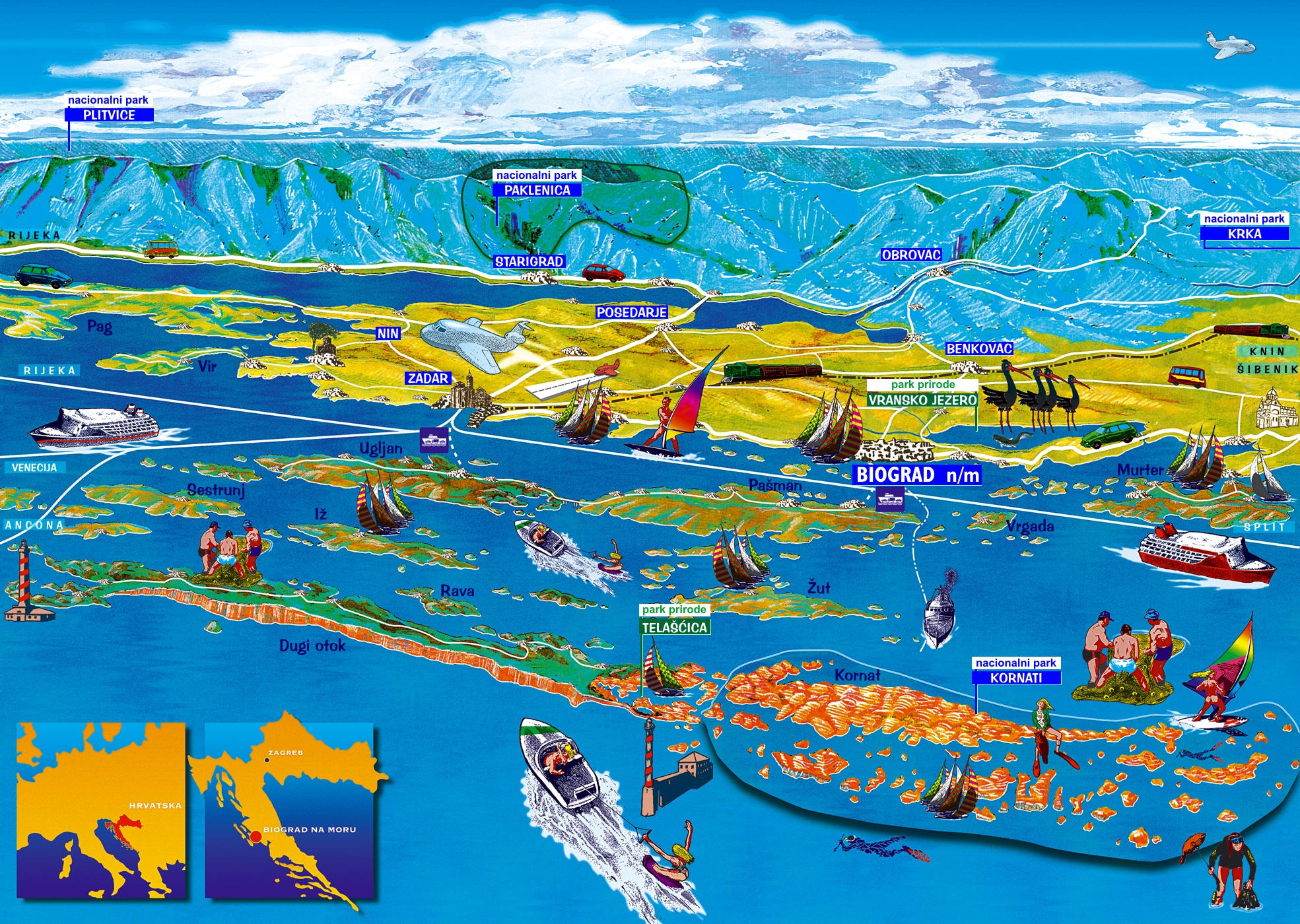About Biograd
Biograd, once a coronation-town of Croatian kings, nowadays is an important and modern tourist and nautical resort of the Riviera sharing the common name - Biogradska Rivijera, in the middle of the Adriatic coast. In the very centre of Biograd there is an obelisk bearing the year 925 AD, the date of coronation of Tomislav, the first Croatian king. In 1102 AD, king Koloman was crowned in Biograd when Croatia and Hungary were joined into a common state based on a treaty accepted by Croatian and Hungarian nobility.
The city has grown into a size
that is just right for living. It lies on a peninsula surrounded by modern
marinas and a promenade with an unforgettable view of the Pašman Canal and the
islands scattered in it. Its long-standing tourist tradition is a reasons for
choosing Biograd as a destination for an interesting and dynamic vacation. t is
possible to bathe in the clear sea and rest on the pebble beaches under the
shade of century-old pine trees. The beach is only a hundred meters from the centre of
the town. The canal offers scattered green islands to those who like isolated
places.
century-old pine trees. The beach is only a hundred meters from the centre of
the town. The canal offers scattered green islands to those who like isolated
places.
Biograd is surrounded by five National Parks (The Plitvice Lakes, North Velebit, Paklenica, Krka River Falls and the Kornati Archipelago) and 2 Nature Parks (Telašćica and the Lake Vrana ). The vicinity of national and nature parks offers a very interesting half day or whole day excursions from Biograd to regions that are considered among the most beautiful in Croatia.
The parish church of St. Anastasia (Sveta Stošija) in Biograd was built in 1761 on the remainings of the crown cathedral. It is a single-nave building with a rectangular apse. The front facade has a portal over which there is an inscription concerning the building of the church and above it there is an opening for the rosettte. The church has a baroque 17th century altar. The church of St. Anthony is an early Romanesque church from the 13th century. The single-nave church has a semicircular apse which once contained an altar. It has been reconstructed and in the summer months art exhibitions take place in it. The church of St. Roko was built in the 16th century and it is situated in the city park. This is a pilgrim church that was dedicated to St. Roko - the patron saint of those inflicted by the plague. It is open to visitors during the summer months and Mass is served only on the feast of St. Roko (16th August). The Benedictine monastery, built on the hill Ćokovac above the village of Tkon on the island of Pašman opposite to Biograd, dates from the 12th century and was founded by the Benedictine order of St. John after the destruction of Biograd in 1125 by Venetians. This monastery was for a long time the source of Slavic liturgy and Glagolitic literature. The church has a portal with the Gothic statue of the Mother of God. The interior of the church consists of many tombstones with epitaphs written in Glagolitic letters. On the tombstones there are also various coat of arms and a valuable crucifix from the 15th century. The monastery has a remarkable cloister with arcades. In the reflectorium of the monastery there are valuable baroque paintings of saints and a rich library.
|
|||||||||||||
|
|
|
|||||||||||
Area map


